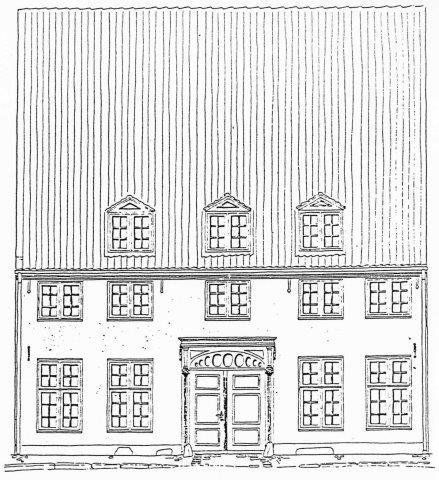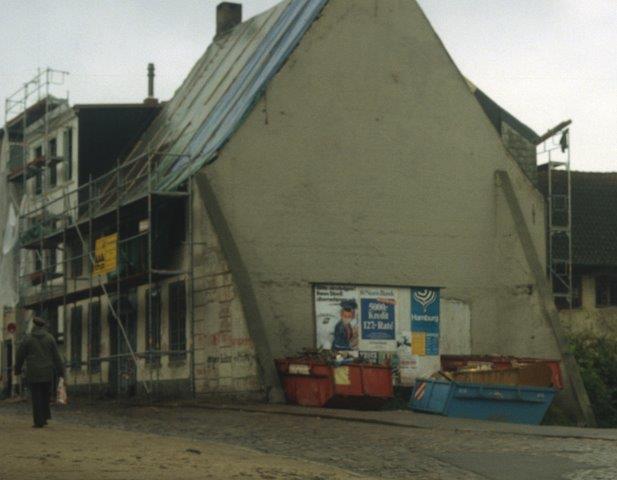Verein zur Erhaltung der östlichen Altstadt St. Jürgen / St. Johannis e.V.


is probably the oldest street of Flensburg. It existed before the year 1100 and served at the time as a link
between today Angelburger Straße to a castle to have stood on the hill opposite St. Johannis church.
This castle was inhabited by a nobleman: An ancient legend after the knight FLENO. His name probably came from the area.
It consisted of an estuary of streams, which led to the then still nearby fjord.
In this wetland Danish:. Å) formed lush growing "flen" (olddän for Reed.) the FlenÅ (pronounced Fleno> Reed-Å)
which could have helped the legendary knight and after him also the city Flensburg to their name.
Fleno, in the service of Duke Knud Lavard, took taxes at the then important intersection of trade routes
and protected the crossroads, which developed into a establishing cell for the city of Flensburg. Below the castle emerged
fishermen who gave their name to today's street. In honor of this myth, which historians have dismissed as ahistorical, is found
opposite the house no. 8 the so-called "Fleno-Park" with a grave site. In this grave site, all kinds of scrap became the corpse of the
alleged founder. (See: Flexikon, 2009, p. 63).
The fishermen's houses were tore off at the end of the 18th century. And replaced by newer homes.

Flensburgisches weekly for everyone, 1828
When the house Süderfischerstr. 8 was built, has so far only been circulated approximately as "around 1800". According to recent research (Dr. D. Pust) The following has been established: Since 1825 the firebrand burner Hans Lorenzen Jordt is registered as a parcelist on the property. But his house burnt in the following year 1926 in July. On the site was then erected and inhabited in 1827/28 the house no. 8, as it still stands today.
Since 1844, tanner Bielenberg was a resident of the house. The situation lay in the brook, because he needed the water to process animal skin. He produce thick leather for shoe soles, boots and saddles from cattle skins. Later, the house also housed a turner Bielenberg, whose son was then a carpenter. House No. 8 belongs, beside the house no. 18, which is hidden behind a glare facade of apparent half-timbered, to the the oldest still standing houses of the street. It is a eaves house (its rain gutter runs parallel to the road). It has a segment-arched entrance gate with a classic-framed wing door.
In 1979, Henning Matthiesen, a Flensburg restorer of paintings, discovered the house for his professional purposes and decided, the now already strong need of restoration building, to buy out from the antique dealer Otto Boysen, to restore the original state such as in the construction.



This ducted in private initiative decision, one of the last since the site remediation in St. Johannis left standing to restore houses, formed the model for which today encountered here small scale, the original old town buildings approximate.



The Süderfischerstraße 1963
All now overlapping layers and changes, which formed the house, peeling the expert restorer with love together with his friend R. Reuter down to detail, until they had uncovered the original shape of the house, both inside and outside.

Henning Matthiesen could complete his work only to a certain degree. But before he died, he sold the house to the art educators and Artist Christoph Wiegand, who together with his wife Kirsten continued the restoration work begun. The rear of the Embankment the yard and garden cleared and freshly laid out. A nearly dead rosebush found during clearing work was planted at the entrance gate to the street. In the meantime, it decorates the house and Süderfischerstrasse again as a tall climbing rose.
A new culture event also growed in this house: In 2003, the music festival FolkBaltica was established here. It was developed by Jens-Peter Müller and Reinhard Salamonsberger.